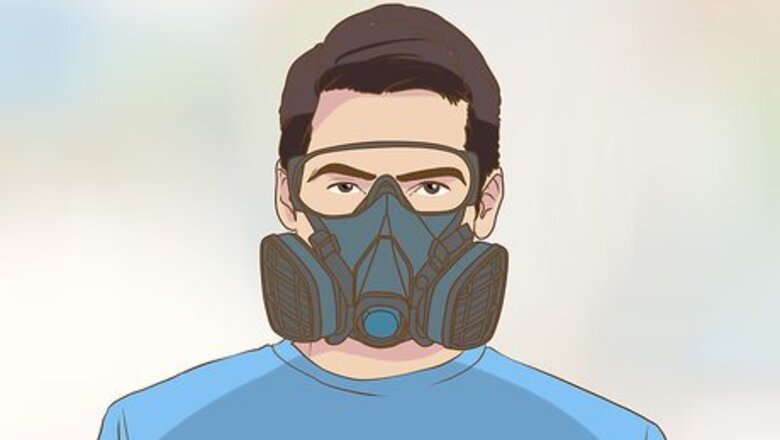
views
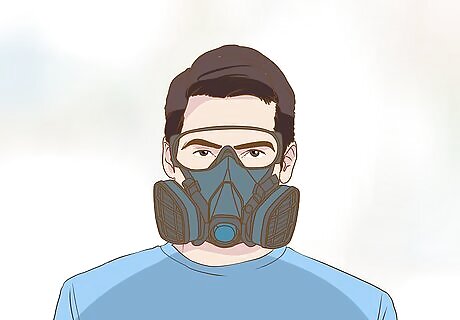
Put on an asbestos respirator. The work you're about to do involves finely-ground brake dust or asbestos dust, and breathing it can be extremely hazardous to your health. Get a mask that's designed for the job of filtering asbestos, not a simple paper one you might use in a shop. Send the kids and pets away, too. Especially the kids—you don't want them anywhere near this project, not even for a moment.
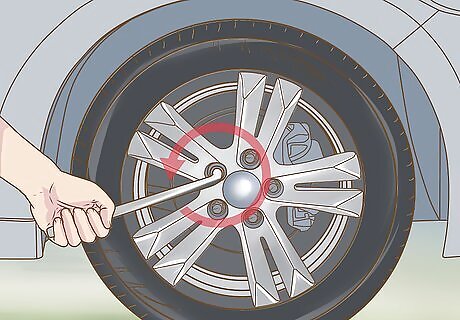
Remove the hubcap and loosen the lug nuts. Block the front wheels with wheel chocks. Jack up the car and support it with jack stands. Never work on a car supported by a jack alone. Blocks of wood or bricks or even cinder blocks aren't suitable substitutes. Finish removing the nuts and remove the tire.

Spray the hub of the wheel with a penetrating oil such as PB Blaster. Note: WD-40 is not a penetrating oil.
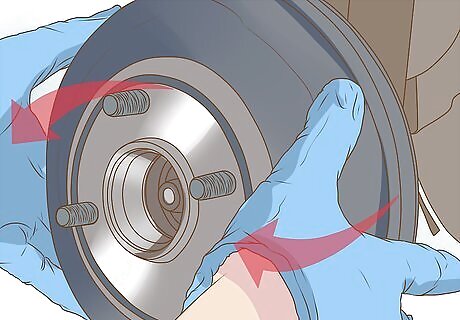
Grab the brake drum by the edges and pull it off. It may help to wiggle it a bit as you pull. It may be necessary to back off the brake adjuster to remove the drum. This is done through the brake adjustment hole in the drum or on the backing plate using a brake adjuster tool to turn the adjuster to loosen the brakes enough to remove the drum.
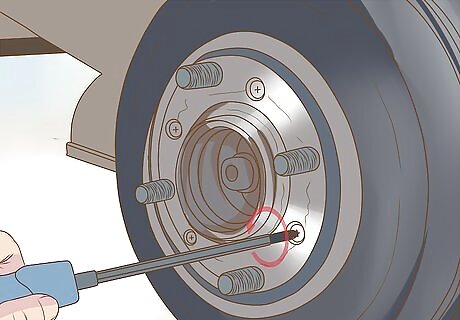
Note: some brake drums are held on with screws so you will need to remove those first.
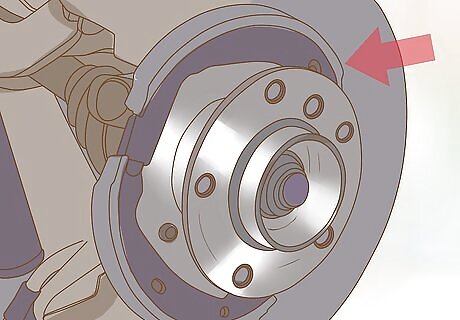
Once the drum is off take a look at it. It should be refaced or replaced if it is scored. Drum brakes have a bunch of springs and levers for the self-adjuster and parking brake. They are usually different colors. Take a picture with a digital camera or make a detailed drawing of where everything is before you take anything apart!
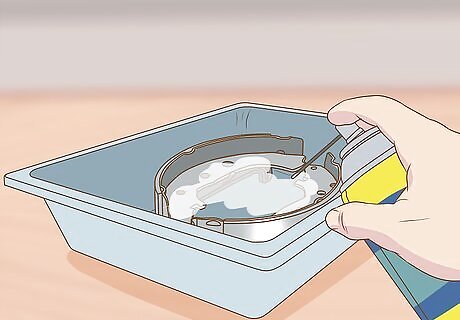
Place the whole brake mechanism in a container and spray it with brake cleaner. Doing this in a container will help keep the dust from becoming airborne. Remember: the dust from most brakes is asbestos, and you don't want to breathe it in. Wear a mask.
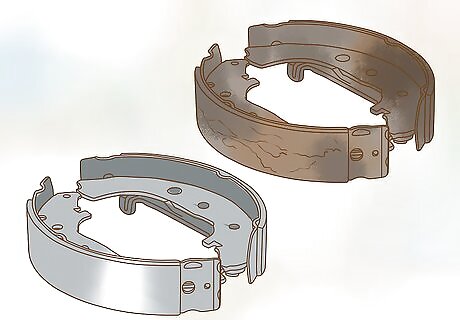
Compare the new brake shoes with the old ones. Make sure they have holes in all the same places. Some vehicles have two different shoes called a leading and trailing shoe. Make sure the brake shoes are the same width.
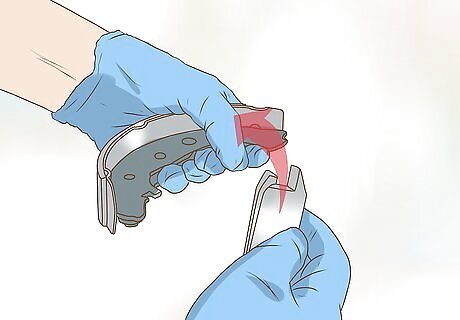
Dismantle the brake. Remove the shoe return springs. Detach the parking brake lever. Hold the shoe retaining pin from the back and remove the retainer springs. Spread the shoes apart from the top and disengage the shoes from the wheel cylinder pins. Remove both shoes and the self-adjuster as one unit. Lay the old shoes on the ground next to the new ones. Sometimes the front and back shoes are different. The shoe with the shorter strip of lining usually goes towards the front. Carefully tip the tops of the shoes inward to loosen the tension on the self-adjuster spring. Remove the self adjuster. Inspect and clean all brake parts to be reused and check for signs of damage or wear and replace as needed. It is recommended to replace all the springs with a new set. The adjuster should be unscrewed, cleaned and lubed with anti-seize. Remove the spring and immediately hook it onto the new shoes exactly as you removed it. Inspect the brake wheel cylinder for any signs of leakage and replace if needed.
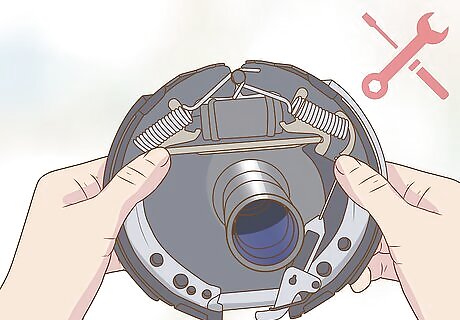
Rebuild the new brake. The brake backing plates should be cleaned and lubed with a small amount of anti-seize on the slide points and anchor points. Screw the self adjuster back in. One side will be a left-hand thread. Place the self adjuster on the new shoes and spread the tops apart to tighten the spring. Put the shoes back in place and slip the retaining pins through the right holes. Install the shoe retainer springs. Attach the shoes to the wheel cylinder pins. Reattach the parking brake lever. Install the return springs. Using a brake adjustment sizing tool, adjust the brakes to fit the brake drum.
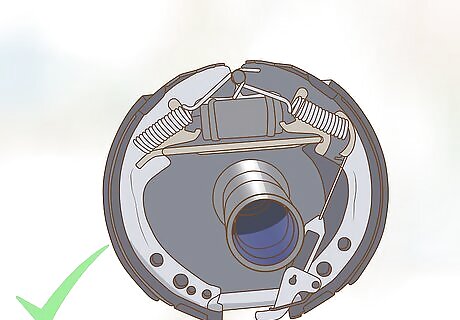
Check your new brakes with the photo you took earlier. If anything looks different start over.
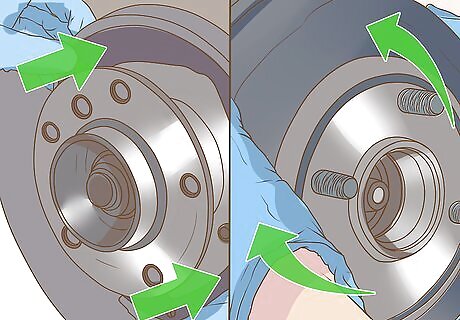
Put it all back together. Slide the new or resurfaced drum over the wheel studs. Install lock screws in drum if equipped. Adjust the brakes through the drum or through the backing plate till a slight drag on the brake drum is felt. Reinstall the tire. Check brake adjustment and readjust as needed to have a slight drag on the drum. Do not over tighten the brakes or they could lock up. Remove the jack stand. Lower the jack. Torque the lug nuts and reinstall the hub cap. Repeat on other side. Bleed out the brake system if any wheel cylinders were replaced. Road test the vehicle to verify brakes work correctly.




















Comments
0 comment